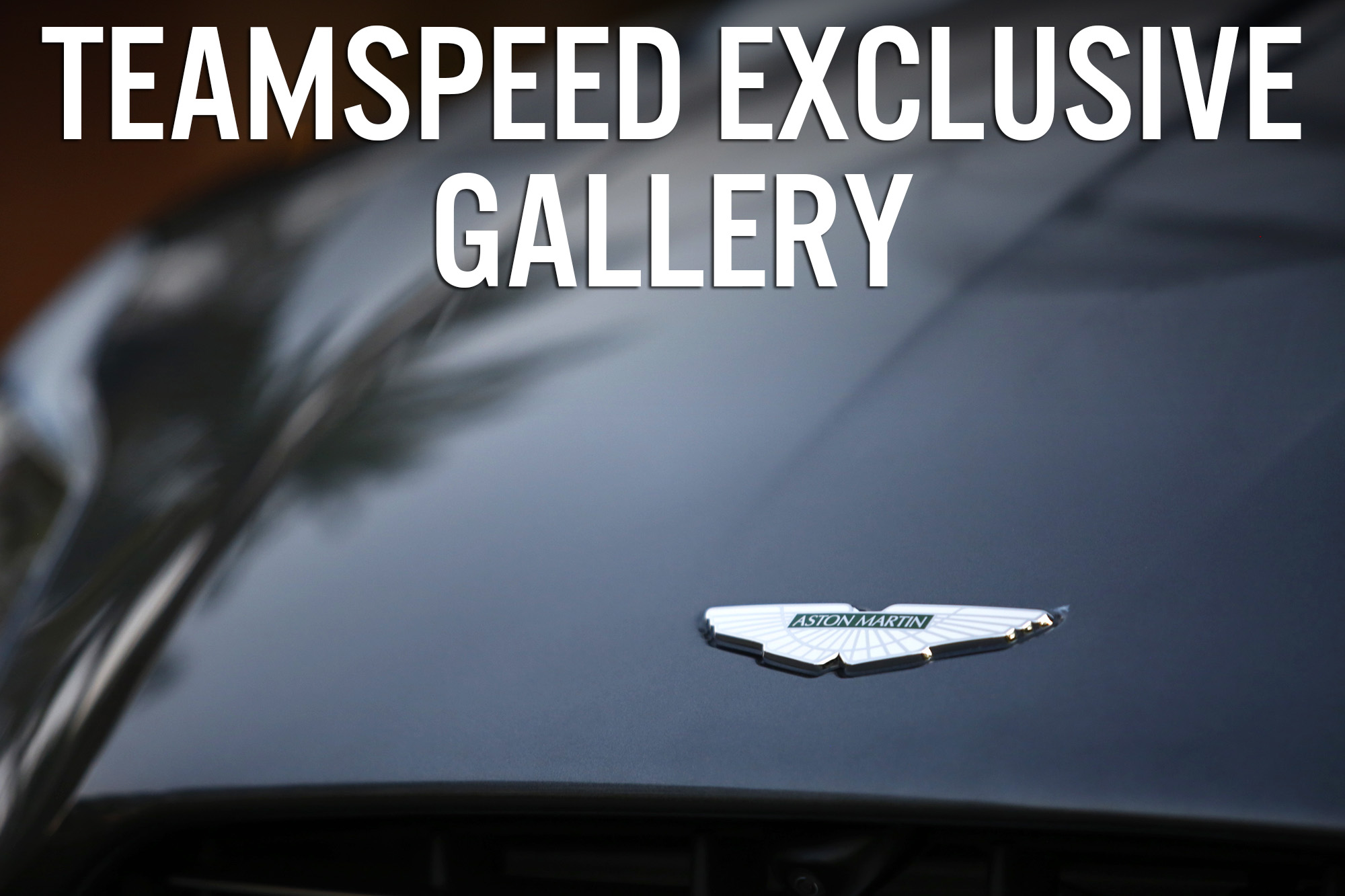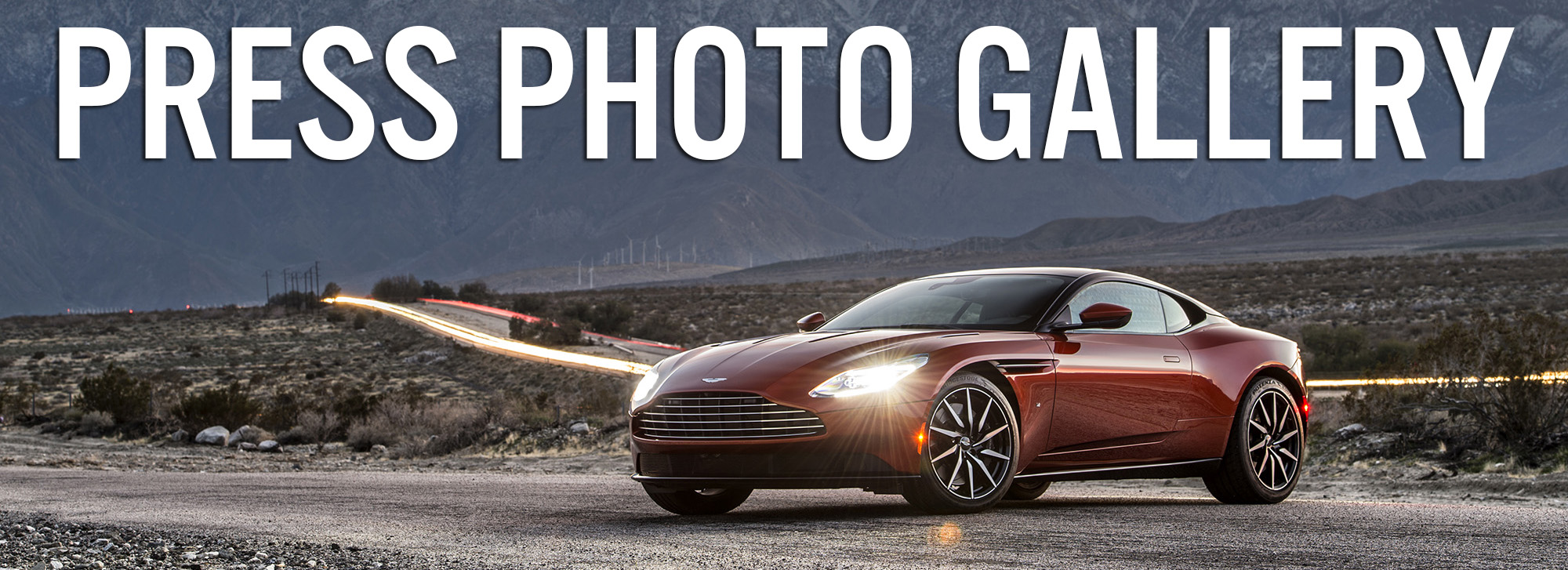FIRST DRIVE: Aston Martin DB11 Leaves Soul Stirred, Not Shaken
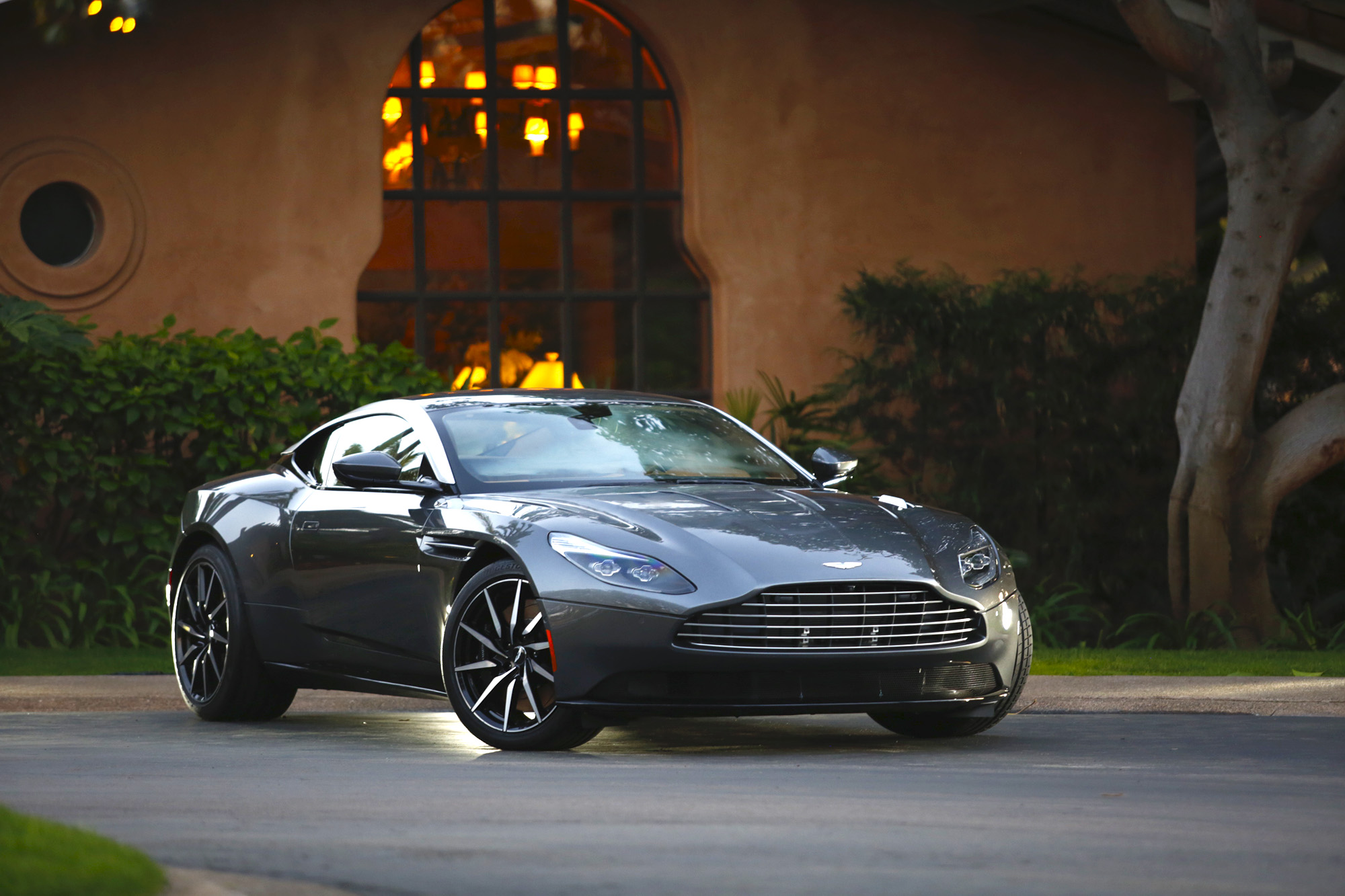
New Aston Martin DB11 is Ready for its Bond Cameo
The Aston Martin DB11 is more than just a good-looking car. It is a force of nature for anyone who can claim they have fuel running through their veins. When I first laid eyes¬†on this masterpiece of aluminum extrusion, I temporarily lost my sense of humanity. I suddenly felt like a hummingbird instinctually¬†attracted to a flower. My¬†pancreas began secreting insulin in preparation for suckling this car’s nectar. The extruded aluminum bodywork is more than just flowing lines and evocative sculpture. To my mind, every¬†body panel on this car is a bulb of sweetness.¬†I want to lick it.
Short of doing that, I spent some time post-drive admiring the all-new DB11’s exterior and interior. If you admire this car’s road presence as much as I do, let’s pour into DB11’s details in the Facebook Live video at the right.
ALSO SEE: TeamSpeed Tests the Caterham Seven 360
The new DB11 is a big deal for Aston Martin. It’s¬†the car maker’s¬†first all-new production DB model¬†since the DB9’s¬†launch in 2003. Aston Martin calls the DB11 its first model derived from its second-century plan. That’s fitting because the DB11 has the kind of face that could launch 1,000 ships¬†new models.
The industry-leading looks are backed up by solid engineering, too. Under the clamshell hood (it took Aston Martin a year to find a supplier to construct the complicated piece of aluminum) resides a new, Aston Martin-designed, 5.2-liter twin-turbocharged V12. Output is 600 horsepower and 516 lb-ft of torque. That’s enough to get this 4,000-lb. automobile¬†to 60 mph in 3.8 seconds on the way to its 200-mph top speed.
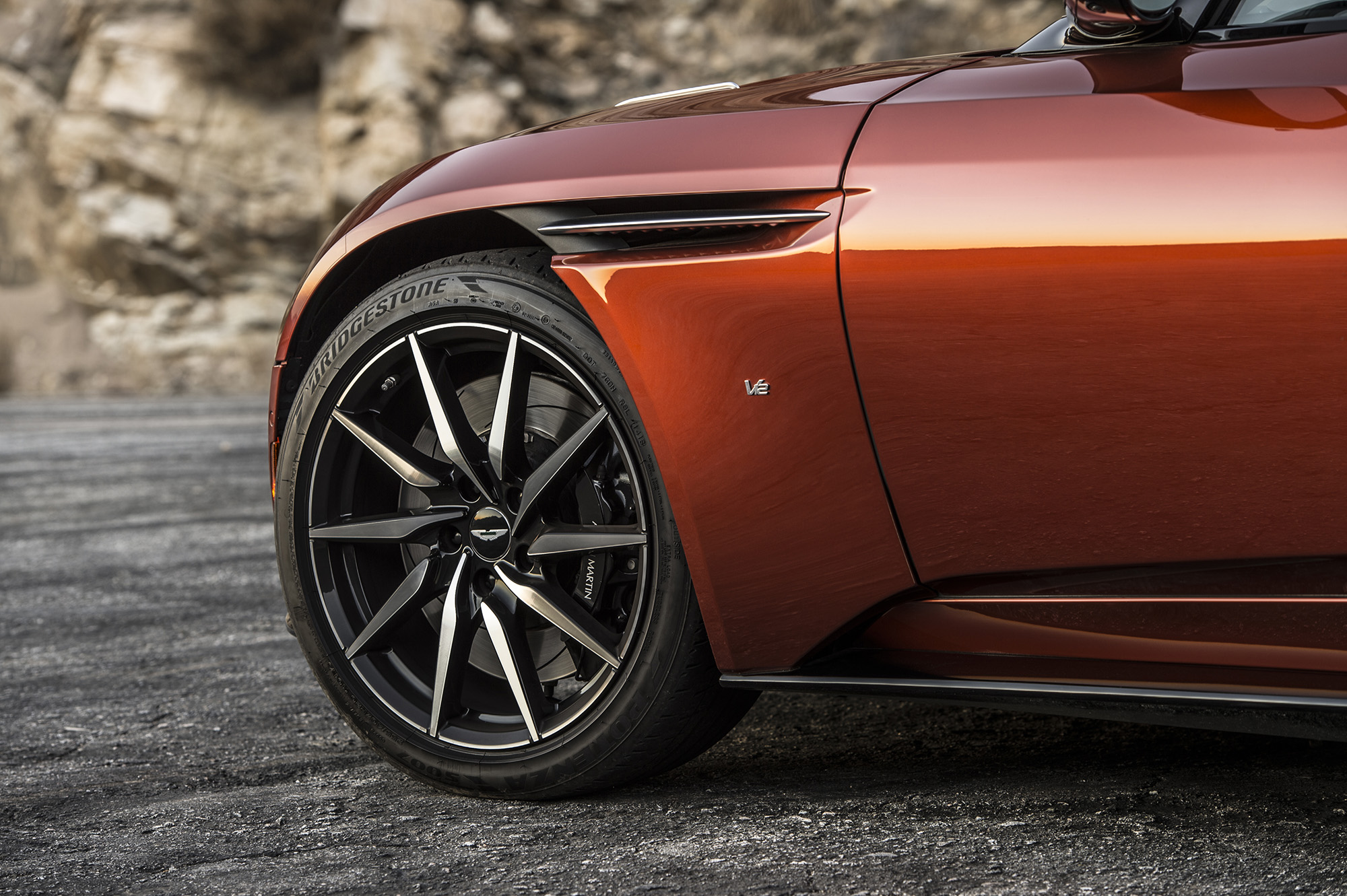
With their newest 200-mph car, Aston Martin had to pay particular attention to aerodynamics. As a result of all the hard work devoted to the DB11’s relationship with¬†air, the car is now the subject of a patent application.
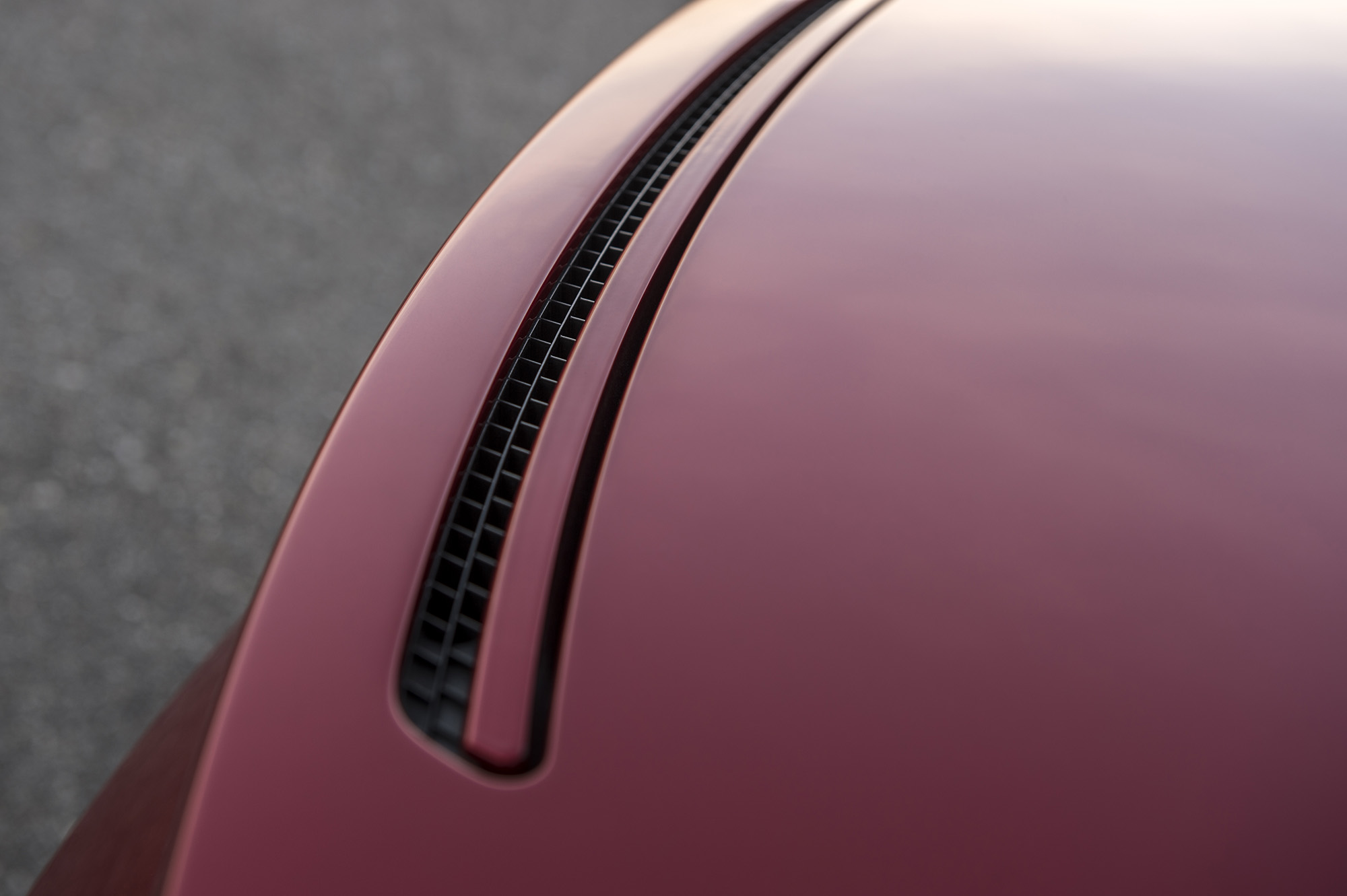
Aston Martin has taken the DB11’s aerodynamics to the next level with the introduction of two new technologies: the Curlicue and the AeroBlade.
The Curlicue is an air vent that flows off the front wheel arches not only in design, but in practice, too. High-pressure air that accumulates at the tops of the wheel arches exits the vents, thus reducing front-end lift. That air is then directed along the aluminum flanks to intake slots located at the bases of the C-pillars.
Once the air enters¬†the intake slots, it¬†flows through the car’s bodywork and exhausts¬†out of a discreet slot at the rear decklid, thus creating a virtual spoiler that reduces rear-end lift.
Thanks to its bag of aero tricks,
the DB11 driving experience begins at 140 mph.
As a result, Aston Martin was able to forgo implementing an upswept rear wing (ahem, Porsche) that would have interrupted the grand tourer’s clean body sculpting. Instead, Aston was free to incorporate a sloping tail into the DB11’s design.
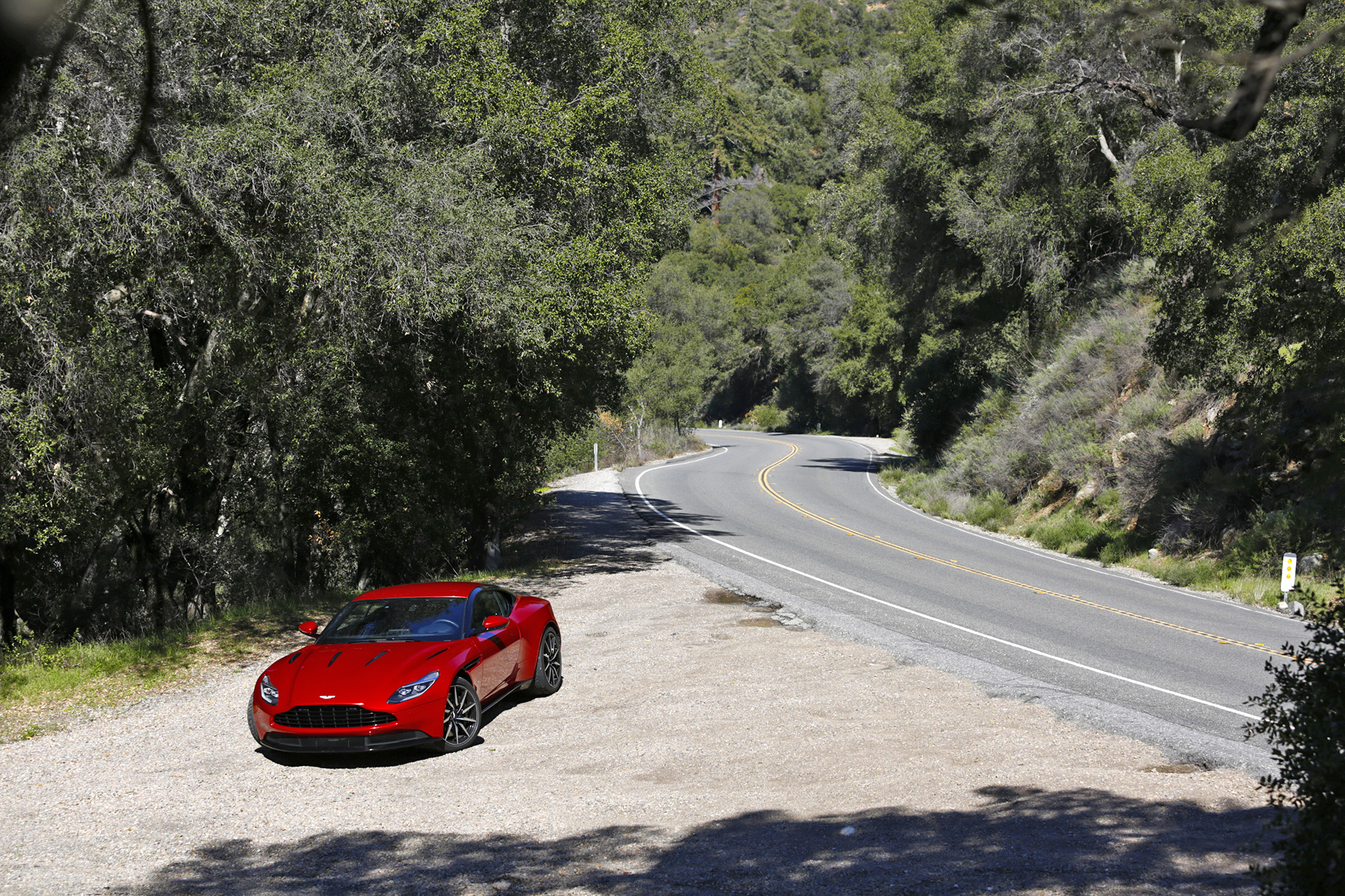
Thanks to its bag of aero tricks, the DB11 driving experience begins at 140 mph. At that speed, the DB11 feels sumo-wrestler planted, but once you dial some lock into the steering, the sumo wrestler becomes a track athlete. After driving the car, I told Ian Hartley, Aston Martin’s Vehicle Dynamics Manager, that I wanted to give him a shout-out congratulating him on the steering. He and his team did a great job on the electric power steering. Yes, for the first time in an Aston Martin production car, there’s electric power steering. Thankfully, Ian worked tirelessly to ensure you wouldn’t miss the hydraulic days of yore. Bravo, Ian.
WATCH: Ultimate Turbo Six-Cylinder Battle
Get to a place where the roads are curvy, and there’s just enough feedback to keep you happy as you feel the tires reach their limits of adhesion. Hit a mid-corner bump, and the show goes on as the DB11 retains its composure with its luxury car ride. It doesn’t dive into turns¬†with the Manson-like¬†ferocity of the Mercedes-AMG GT S, but the DB11 can handle its own on a back road.
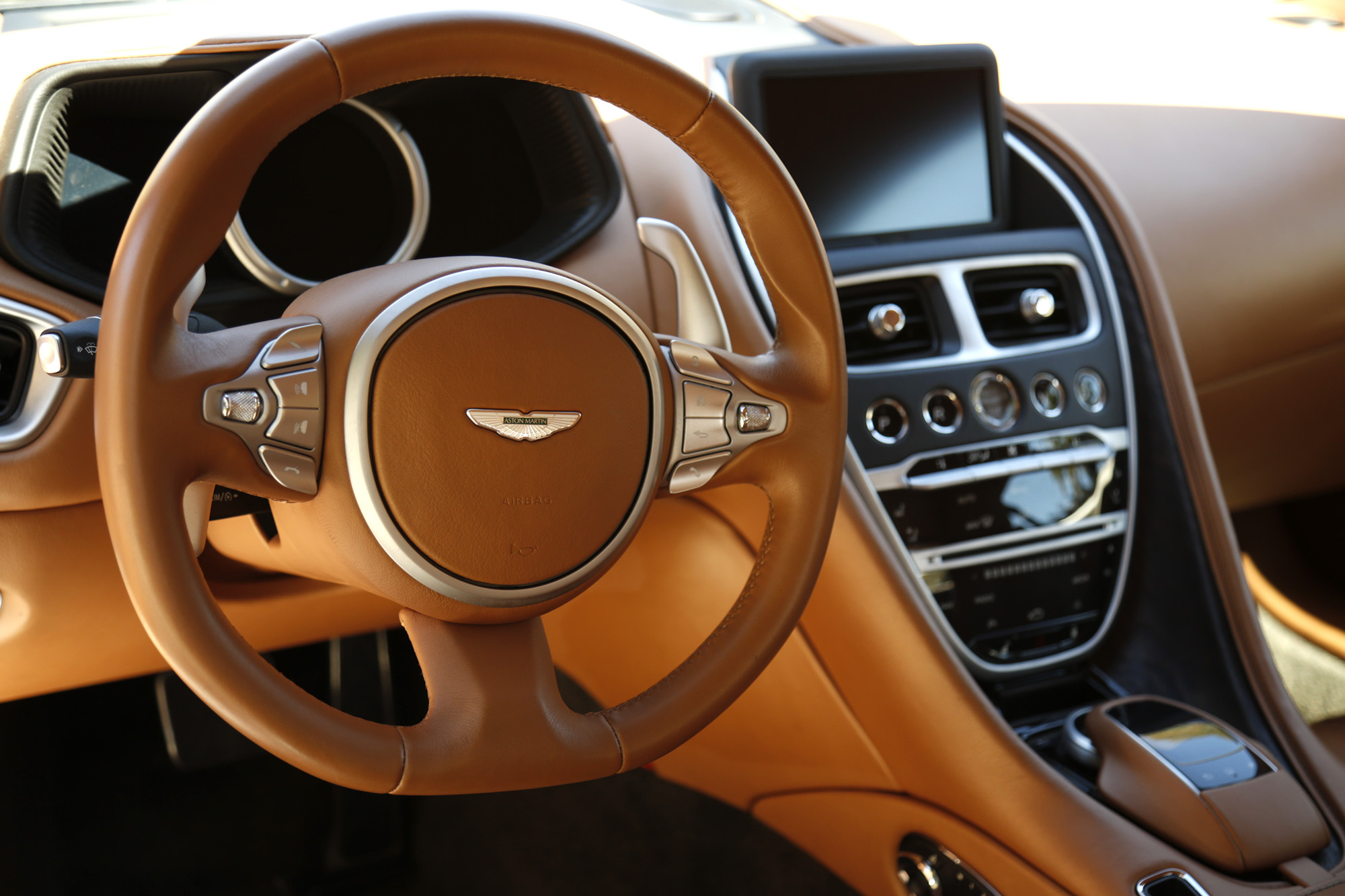
Most people who buy these cars won’t be taking them into the hills, and¬†that’s OK. The DB11, with its smooth and well-programmed ZF 8-speed automatic, is happy taking it slow¬†on Rodeo Drive or Sunset Boulevard. Leaving the open road and returning to city streets, I cranked the tunes on the optional 1,000-watt Bang & Olufsen BeoSound audio system. This B&O system is the best I’ve heard in any car that offers B&O. I find Audi’s B&O audio to be monochrome, which I suppose is fitting for a German car. In the Aston Martin DB11, it’s like the audio engineers harnessed the power of a British rainbow, and bottled it into the BeoSound circuitry. A day turning heads while driving this car along the beach, music cranked,¬†seems like a most delightful day.
And it’s easy to work those electronics: they’re backed by Mercedes-Benz technology, so there’s no British quirkiness¬†there. The stereo, HVAC and driver assistance features¬†are managed by the same level of German logic you might already be used to in a Mercedes-Benz, but every touch point is finished in Aston Martin-grade metals and glass, so there will be no mistaking the DB11’s cabin for some Benz that costs much¬†less.
CHECK OUT: Driving the Bugatti Veyron Will Melt Your Brain
Speaking of Benzes, I got a chance to see a Mercedes-AMG GT S parked near the DB11. The AMG GT S starts at $131,200. The DB11 starts at $211,995. Does the Aston Martin DB11 look every cent of $80,795 more expensive? You bet it does.
Aston Martin needs to equip DB11 owners with sets of eyes for¬†the backs of their heads, or else they’ll walk¬†backwards into things that will make them trip and fall. There’s no other way to walk away from the DB11 but backwards, mouth agape and eyes widened. This¬†car is simply narcotic.
